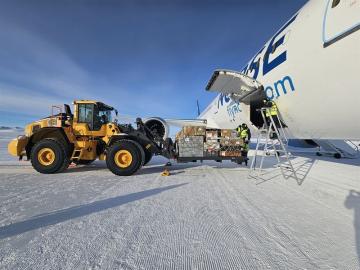 First Norse Dreamliner landing in Antarctica
First Norse Dreamliner landing in Antarctica
Various aircraft types have landed at Antarctica over the past decades, in the name of scientific research or for tourism. From airliners the size of Airbus A319/A340s, Boeing 737/757/767s and Ilyushin 76s, commuters like the Dash 6 and 7 and CASA C212, propliners such as BT-67 Baslers to military aircraft in the shape of the C-17 Globemaster III, LC-130s and P-3 Orions.
Now another type can be added to that list, the Boeing 787 Dreamliner, operated by Norse Atlantic and made history by becoming the first example of the type to land in Antarctica. The project was arranged by the Norwegian Polar Institute in partnership with Norse Atlantic Airways. The Institute operates continuous monitoring programmes in the Arctic and Antarctic to understand environmental changes and their consequences. Such programmes require regular resupply.
On 15 November 2023, Boeing 787-9 LN-FNC (38790) Everglades, landed at the remote Troll research station in Queen Maud Land, Antarctica, at 02:01 local time in the morning. Aboard flight N0787 were 45 passengers, including scientists from the Norwegian Polar Institute and other countries, destined for different stations in Antarctica. The flight also transported twelve tons of essential research equipment crucial for Antarctic exploration. 
Antarctica lacks conventional paved runways; hence Norse landed on a ‘blue ice runway’, 3,000 metres long and sixty metres wide. The Norwegian Polar Institute operates the research station located in Jutulsessen in Queen Maud Land, approximately 235 kilometres from the coast.
The Boeing departed Troll Airfield just over four hours after landing on its icy runway and has since arrived back in Cape Town. Today, 17 November, it will return back to Oslo.

